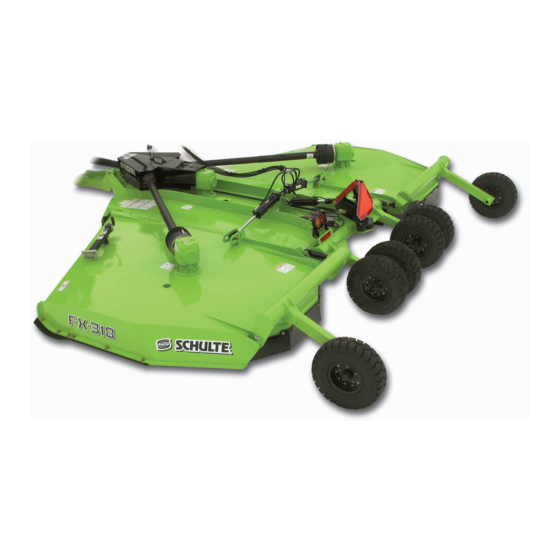Table of Contents
Advertisement
Quick Links
FX-318/FX-212 SERIES 2
Published 08/21
This Operator's Manual is an
integral part of the safe operation
of this machine and must be
maintained with the unit at all
times. READ, UNDERSTAND, and
FOLLOW
Operation Instructions contained
in this manual before operating
the equipment. C01-Cover_S
Schulte Industries Ltd.
PO Box 70
Englefeld Saskatchewan
Canada S0K 1N0
Tel. (306) 287-3715
Fax. (306) 287-3355
Parts Fax. (306) 287-4066
Web: www.schulte.ca
Rotary Cutter
S/N C31820801108-C31820827108
S/N C31920022108-C31920024108
OPERATOR'S MANUAL
the
Safety
©2021 Alamo Group Inc.
Important
Operating
and
Instructions are found
in the Mower Safety
Video
that
can
instantly accessed on
and
the
internet
www.algqr.com/sve
Part No. C319-010C
Safety
be
at:
$0.00
Advertisement
Table of Contents





Need help?
Do you have a question about the 2 Series and is the answer not in the manual?
Questions and answers